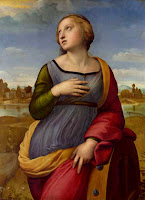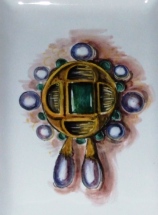 |
| Class and prestige at the Grazia factory in Deruta. |
My dream home for ceramics in Deruta is the Grazia factory. I love their building and their ceramics style. I wish they liked the idea of hosting Cama. I would make them part of the wonderful world of the Friends of Cama!
The Grazia factory is the oldest workshop in Deruta that made it from the 1500s. Indeed the Grazia factory is listed among the most ancient family run operations worldwide.
In 2009 Electa Editor published the book "Museo della fabbrica di maioliche Grazia di Deruta" (tr. Museum of the Grazia ceramics factory in Deruta" ISBN-13: 978-8837063450), where the authors write for the first time about the date of birth of the workshop: 1527 A.D. Marco di Paolo Grazia was the name of the founder. He started the art of his family by renting a furnace in the borough of Deruta with the following description "ad artem vasorum fictilium" (English translation "The art of earthenware vessels").
I would be grateful to the Grazia factory for dedicating part of their factory to my mother as the "heir of Grazia", what she is known for when in the 1980s the Grazia factory opened their laboratories to contemporary artists creating modern designs, while my mother Elena Niccacci was energetically restyling the traditional Deruta patterns for Cama.
To me the work of my mother and the style of Grazia have the same "transferware" look, funny enough nowadays an appreciation to a handpainted ceramics piece that is very well done is that it looks like "decal".
 |
| A full of grace expression from a Renaissance lovers' cup. |
Indeed a ceramics piece from Deruta can reach the perfection and can be flawless. The process to reach such a high challenge is much longer and takes more care and attention than any other process. This is one of the reasons for the higher prices of the ceramics pieces.
The work of my mother Elena Niccacci and her team goes beyond the perfect look. Her work is graceful and an expression of love and passion. Graceful literally translates in Italian "Pieno di GRAZIA".
If you google "grazia factory Deruta" the photo of the hands of my mother come up and lots of photos from my blog. This might be a sign of the destiny!
______________________________________________________________
Latest news as of September 18th, 2011 - Victim of the recession in Deruta, Italy is this time the famous Grazia factory. In the paper these days, the factory has sent their 18 employees home for two months for lack of orders. The Italian government will be supporting the artists according to the temporary redundancy program.
-----------------------------------------
FRIENDS OF CAMA











